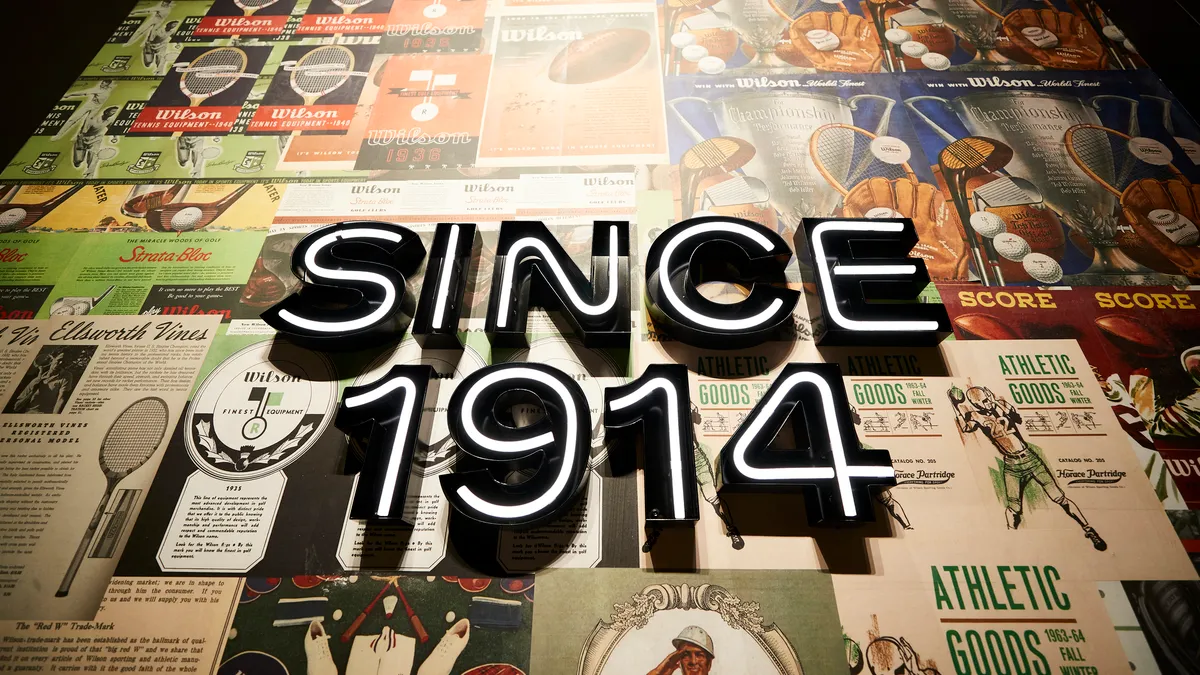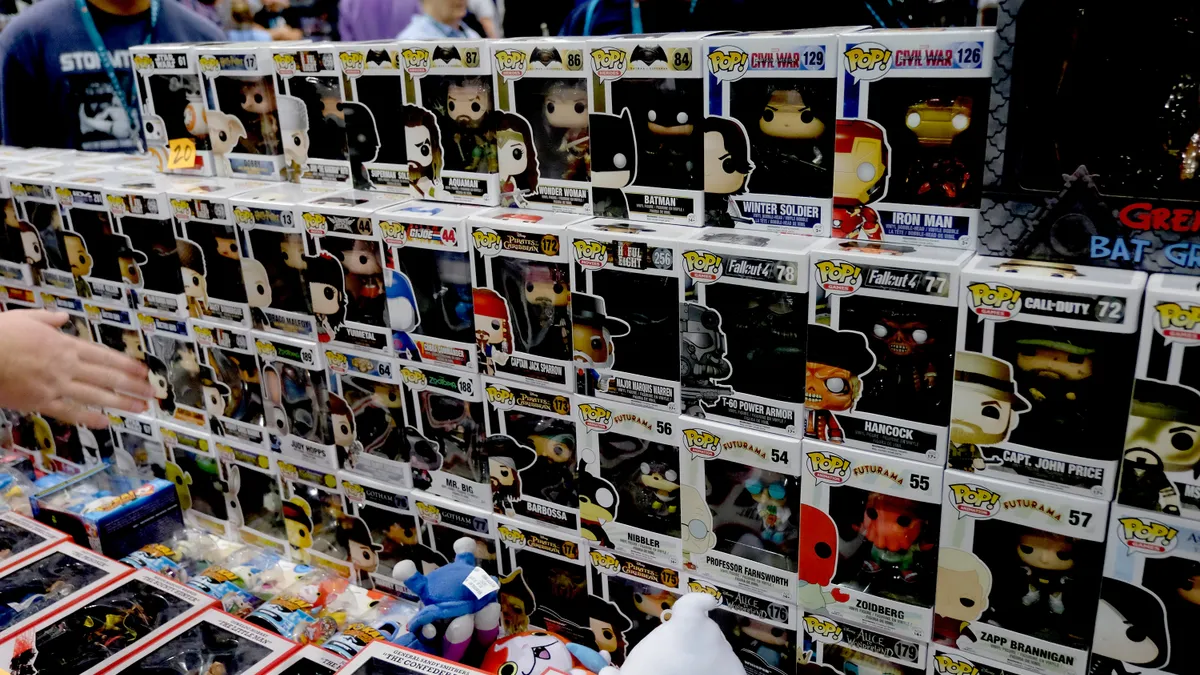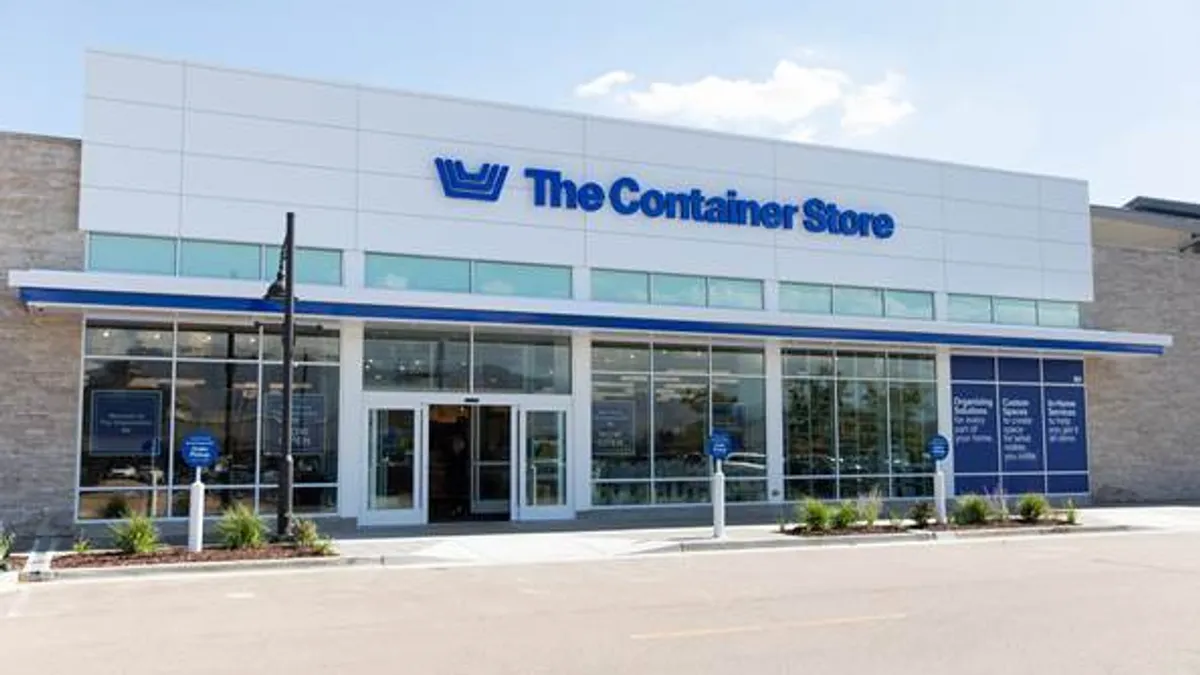Wilson, long known for its basketballs, baseball gloves and bloody handprint volleyballs, doesn't have an issue with brand awareness. Its products can be found on the shelves of major sporting goods retailers, and its equipment can be seen in the hands of professional athletes playing sports from tennis to football.
But now, Wilson wants to be more than a familiar face in the background of the sports industry. Over the past year, the company has shifted its strategy to take the Wilson brand front and center, opening stores that display Wilson's products on their own, not next to a host of other competing companies.
"I sort of look at the business and the brand and I think that we've spent 108 years building a foundation," Gordon Devin, president of Wilson Sportswear, said in an interview. "And that's it."
Wilson first declared its intentions to pursue a more DTC strategy in May last year with plans for a fleet of its own retail stores and the launch of an apparel line. Since then, the company has opened a store in Chicago and a tennis pop-up store themed to the U.S. Open. On Friday, however, the company opened its first flagship since the DTC push.
Located in New York's SoHo district, the 6,400-square-foot flagship is nearly three times the size of Wilson's Chicago storefront and represents a focus on interaction and experience. The store not only hosts Wilson's equipment offerings and lifestyle apparel collection, but also full-time services like racket stringing, leather ball customization, glove personalization and a golf simulator. A central atrium space can be used for a variety of sporting events and is "the reason for being" of the flagship.
"My ambition is to create mayhem for our store staff," Devin said of the space. "A place that is so frequented and used and loved and played in that our team here are overwhelmed by just the euphoric joy that comes out of that space. I want to see balls flying all over the store because we have created a space where we are just inspiring play — that's what it's all about."
The store also features a graffiti mural by a local artist, Greg Lamarche, and opened with a celebration featuring local New York athletes. It's the second of three stores Wilson is planning for its key markets in the U.S.: Chicago, New York and Los Angeles. The Los Angeles store, along with a Shanghai location, are set to open in the year ahead.
Why now?
Wilson is among a slew of brands that are making a push to sell more products directly to the consumer. While that often comes at the expense of wholesale partners, as evidenced by the likes of Nike and Adidas, Wilson has invested in building a strong wholesale presence since its inception and doesn't plan for any of that to go away. Devin said the wholesale business last year was "fantastic" and that the DTC relationship is really meant to be built in addition to that channel.
So why do it? It gives Wilson another way to engage with its consumers and tailor stores to what its brand loyalists want. In planning out its DTC strategy, executives even tweaked the acronym to stand for "direct to community" — a pledge of sorts that where Wilson chose to open stores and what the brand put in its stores would be based off of the central philosophy of creating a network of communities.
As the brand has begun its journey into owned stores, Devin and the rest of the Wilson team have defined three separate physical models for its locations: flagships like New York, which offer "a full brand expression;" a smaller, community-focused format like in Chicago and temporary pop-ups like that opened for the U.S. Open. Services will be important across Wilson's fleet, but at smaller locations the limited space means services are restricted to specific store-based events rather than integrated into daily operations.
The company will open a mix of those formats over the next few years, reserving flagships for key markets in the U.S. and globally, expanding smaller format stores to specific communities and opening pop-ups when the company can take advantage of key sports moments. A couple more pop-ups are already planned for this summer.
"In terms of total numbers, we're not planning on opening hundreds of stores," Devin said. "We are planning on opening a decent number, so it would be in the 10s of each of those formats over the next few years as we really expand the reach, the breadth of our brand [and] as we create stronger relationships with our customers."
Already, Wilson is learning from its new storefronts. The company has customers across all age ranges, and is much stronger with women than executives initially thought it would be. The apparel launch has also made Wilson a more attractive repeat shopping destination, according to Devin, with customers engaging more frequently with the brand as a result.
Wilson has been planning the DTC phase of its growth for a couple of years, but that doesn't mean it's early to the trend. Nike in 2011 was already discussing the growth of its DTC channels. Now that Wilson's come on the scene, though, the brand is ready to take full advantage of the fans it's acquired over a 108-year history.
"I think that we're probably late to the game. Maybe the right time was earlier, but the right time was now because we hadn't done it and we had to start it," Devin said. "And what we've learned is that, when we give customers the opportunity to interact with this brand and we try to give them the permission to love us, they really do."





















